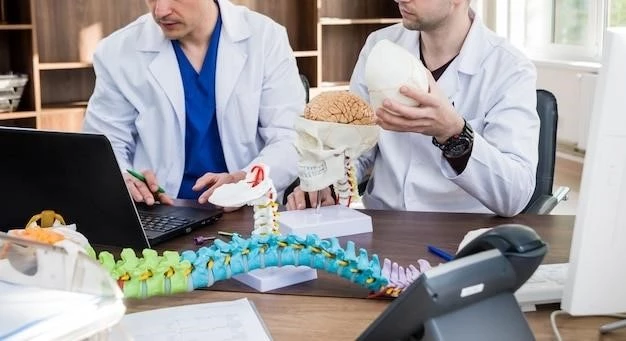Overview of Progressive Osseous Heteroplasia
From OMIM, Progressive Osseous Heteroplasia is a rare autosomal dominant disorder characterized by dermal ossification beginning in infancy, followed by increasing and extensive bone formation in deep muscle and fascia.
Definition and Characteristics
Progressive Osseous Heteroplasia (POH) is an ultrarare genetic disorder characterized by abnormal bone formation in areas where bone should not exist, starting with cutaneous ossification and progressing to deep tissues and muscles. It is primarily caused by inactivating mutations of the GNAS gene inherited paternally.
Genetic Basis and Inheritance
Progressive Osseous Heteroplasia (POH) is primarily caused by inactivating mutations of the GNAS gene, specifically inherited paternally. This rare genetic disorder leads to abnormal bone formation in various tissues and muscles, manifesting as cutaneous ossification in early stages and progressing to deep tissues over time.
Clinical Presentation and Symptoms
Progressive osseous heteroplasia (POH) presents with cutaneous ossification, initially affecting the skin and subcutaneous tissues. Over time, the condition progresses, leading to heterotopic ossification in deep connective tissues and muscles.
Cutaneous Ossification
Progressive osseous heteroplasia (POH) presents with cutaneous ossification as an initial symptom, leading to abnormal bone formation in the skin and subcutaneous tissues. The ossification typically begins in early life and may progress to involve deep connective tissues and muscles over time.
Progression to Deep Tissues and Muscles
As progressive osseous heteroplasia (POH) advances, the ossification process extends from cutaneous tissues to deeper layers, including connective tissues and muscles. The condition leads to abnormal bone formation in areas beyond the skin, leading to potential complications and affecting the functionality of the affected tissues.
Diagnosis and Differential Diagnosis
The diagnosis of Progressive Osseous Heteroplasia (POH) is based on clinical features, imaging studies, and genetic testing to confirm mutations in the GNAS gene. Differential diagnosis includes related disorders like fibrodysplasia ossificans progressiva (FOP) and osteoma cutis, requiring careful evaluation to differentiate the conditions accurately.
Diagnostic Criteria
Diagnosing Progressive Osseous Heteroplasia (POH) involves evaluating clinical manifestations, utilizing imaging techniques to assess bone formation, and confirming the presence of inactivating mutations in the GNAS gene through genetic testing. The diagnostic process aims to differentiate POH from other related conditions with similar symptomatology.
Differentiating POH from Related Disorders
Distinct from related disorders, Progressive Osseous Heteroplasia (POH) is distinguished by the genetic basis of inactivating mutations in the GNAS gene inherited paternally. Differential diagnosis involves careful identification of specific clinical features and imaging findings to differentiate POH from conditions such as fibrodysplasia ossificans progressiva (FOP) and osteoma cutis.
The treatment of Progressive Osseous Heteroplasia (POH) typically involves a multidisciplinary approach focusing on managing symptoms and improving quality of life. Currently, therapeutic strategies aim to address pain, preserve mobility, and prevent complications associated with abnormal bone formation. Surgical interventions may be considered in severe cases to improve functionality.

Treatment and Management Approaches
The treatment of Progressive Osseous Heteroplasia (POH) typically involves a multidisciplinary approach focusing on managing symptoms and improving quality of life. Currently, therapeutic strategies aim to address pain, preserve mobility, and prevent complications associated with abnormal bone formation. Surgical interventions may be considered in severe cases to improve functionality.
Surgical Interventions and Rehabilitation
In cases of Progressive Osseous Heteroplasia (POH) where symptoms severely impact quality of life, surgical interventions may be recommended to address abnormal bone formation. Rehabilitation plays a crucial role post-surgery to enhance mobility and restore functionality to affected tissues.
Prognosis and Complications
Progressive Osseous Heteroplasia (POH) can impact mobility and quality of life due to abnormal bone formation affecting deep tissues and muscles. Complications may include limited joint mobility, pain, and functional impairment, necessitating comprehensive management strategies to address these challenges.
Impact on Mobility and Quality of Life
Progressive osseous heteroplasia (POH) can significantly affect mobility and quality of life by causing abnormal bone formation in deep tissues and muscles. This condition may lead to limited joint mobility, pain, and functional limitations, impacting the individual’s ability to perform daily activities effectively.
Potential Long-Term Effects
Long-term effects of Progressive Osseous Heteroplasia (POH) may include continued progression of abnormal bone formation, leading to chronic pain, reduced mobility, and potential joint ankylosis. These complications can significantly impact the individual’s quality of life and necessitate ongoing management to address the evolving challenges associated with the condition.

Research and Support Organizations
Ongoing research efforts in Progressive Osseous Heteroplasia focus on understanding the genetic and molecular mechanisms underlying the condition, exploring novel treatment approaches, and improving patient outcomes. The Progressive Osseous Heteroplasia Association (POHA) plays a crucial role in supporting individuals affected by POH through education, advocacy, and research.
Ongoing Research Efforts in POH
Research efforts in Progressive Osseous Heteroplasia (POH) focus on understanding the molecular mechanisms driving abnormal bone formation, exploring targeted treatment options, and improving the management of this rare genetic disorder. Collaborative research projects aim to enhance knowledge and outcomes for individuals affected by POH.
Role of Progressive Osseous Heteroplasia Association (POHA)
The Progressive Osseous Heteroplasia Association (POHA) is a vital nonprofit organization dedicated to supporting research and education on POH. The POHA collaborates with international groups of physicians and scientists to enhance knowledge and advance clinical and basic aspects of the POH project. If you wish to contribute or seek information related to POH, connecting with the POHA can provide valuable insights and resources.
